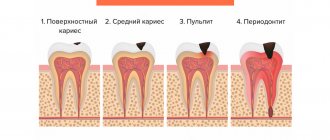Tuberculosis: routes of transmission, forms, symptoms
Contents Routes of transmission of tuberculosis
Latent tuberculosis
Symptoms and testing of tuberculosis
Tuberculosis ranks first in mortality among infectious diseases. According to WHO, 10 million cases of the disease are registered annually in the world. About 2 million tuberculosis patients die without receiving the necessary treatment. The vast majority of people affected by tuberculosis live in countries with low standards of living, income and health care. 80% of tuberculosis cases are registered in 22 countries of the world, which includes Russia. The remaining 197 countries are practically free of it.
In 2014, the UN Assembly proclaimed a declarative goal to eradicate tuberculosis by 2035. The goal is to reduce the number of new cases of tuberculosis by 90% and create an environment in which no family bears the catastrophic costs of treating the disease. Humanity planned to defeat tuberculosis back in the last century: in the middle of the 20th century, effective anti-tuberculosis drugs were invented, and it seemed that eradicating tuberculosis from the planet would take two or three decades. However, everything did not go according to the optimistic scenario.
The fact is that Mycobacterium tuberculosis
) is capable of mutating under unfavorable conditions. It adapts well to external factors, including medications when used incorrectly. More and more people on the planet are becoming ill with multidrug-resistant mycobacterium tuberculosis.
According to WHO, Russia is among the 27 countries with the largest number of patients with drug-resistant tuberculosis. More such patients live only in China and India.
Based on the volume and nature of the lesion, there are two main types of tuberculosis - pulmonary and extrapulmonary. Mycobacterium tuberculosis can affect not only the lungs and bronchi, but also bones, joints, intestines, lymph nodes, membranes of the brain and other organs. An epidemic danger is posed by a patient with tuberculosis whose sputum contains mycobacteria, especially if he does not yet know about his disease and does not receive treatment. In the closed form, when Mycobacterium tuberculosis is not detected in sputum tests, there is practically no risk of transmission of infection from the patient (it is not necessary to wear a respirator when contacting such patients).
Routes of transmission of tuberculosis
In total, there are four classical routes of transmission of tuberculosis: aerogenic (airborne and airborne dust), nutritional, through the digestive tract (for example, through infected milk or meat of a sick animal), contact (through the conjunctiva and damaged skin) and vertical (from mother to fetus).
An aerogenic route of transmission is possible through coughing, sneezing, loud singing, when mycobacteria enter the air inside droplets of an infected aerosol sprayed by a patient. Then the mycobacteria contained in these drops enter the body of a healthy person with the air flow. But this does not mean that a person will definitely get sick. Most often, the well-coordinated work of the immune system does not allow mycobacteria to enter the body. And even if this happens, it causes minimal local inflammation, which does not develop into a disease. This is how a condition is formed that we call latent tuberculosis infection.
Infection through a book that a person with tuberculosis could sneeze on is more of a myth. Even if a book contains viable mycobacterium, it is unlikely to penetrate into the deep lungs of another person.
A guide to hepatitis
About the routes of transmission of hepatitis, about the first symptoms and precautions when caring for patients Anna Kiseleva
Nursing
The most serious case of nutritional transmission of tuberculosis occurred in the German city of Lübeck in 1930, in the era before the advent of anti-tuberculosis drugs. At that time, the BCG vaccine (Bacillus Calmette-Guérin, a vaccine against tuberculosis) was administered orally in the form of drops. During routine vaccination, 240 newborns were mistakenly given a virulent culture of Mycobacterium tuberculosis instead of BCG. As a result of infection, all children fell ill, 77 of them died from tuberculosis. Some children remained clinically healthy, but a long period of observation showed that all of them had suffered tuberculosis. A few years later, large calcifications (accumulations of calcium salts) in the abdominal lymph nodes began to be detected in children, which indicated previous tuberculosis.
Now it is almost impossible to become infected with tuberculosis through a vaccine: the live attenuated mycobacterium of the artificially isolated BCG strain, which is used to create the vaccine, has practically lost its virulence for humans.
Currently, the tuberculosis vaccine is available in dark glass bottles in the form of a powder, which must be diluted with a solvent before administration. The appearance of the bottle and the procedure for preparing the vaccine, storage conditions minimize the likelihood of confusing it with other drugs.
Contact and vertical routes of infection with tuberculosis are extremely rare in practice. For example, the medical literature describes cases where a pathologist, while opening the corpse of a person who died of tuberculosis, injured the skin, and subsequently developed skin tuberculosis at the site of the cut. For a vertical route of infection to occur, the mother's placenta must be affected by tuberculosis, and this organ is evolutionarily well protected from infection.
Latent tuberculosis
According to WHO experts, approximately a third of the world's population is infected with Mycobacterium tuberculosis, that is, they have a latent tuberculosis infection. Latent tuberculosis infection (LTBI) is defined as a state of persistent immune response to Mycobacterium tuberculosis that has previously entered the body. People with latent TB infection are not contagious, but they have an increased risk of developing active TB disease.
Let’s say a person came across a patient with tuberculosis, the mycobacterium entered his lungs and “fell asleep.” In the body, the immune system became “acquainted” with the mycobacterium, and it acquired an immunological memory for this pathogen. In the future, this knowledge will allow a person to more easily fight tuberculosis infection if it is activated or a new infection occurs. Usually for a person such a “meeting” goes unnoticed.
Sometimes, during an X-ray examination, small calcifications are found in the lungs and intrathoracic lymph nodes of a person with LTBI. However, more often these changes are so minimal that they do not appear either clinically or radiologically. LTBI is detected using immunological tests, which include the Mantoux test, Diaskintest and interferon gamma release tests (IGRA tests).
WHO recommends testing for latent tuberculosis infection in people at risk: people with HIV infection, people in contact with people with tuberculosis, patients on dialysis, patients preparing for organ transplantation, and patients with silicosis. In this situation, activation of latent tuberculosis can be prevented by chemoprophylaxis with anti-tuberculosis drugs.
Important
German scientist and researcher Robert Koch, after 17 years of work in the laboratory, discovered the causative agent of tuberculosis during a microscopic examination of the sputum of an infected person. Subsequently, he isolated a pure culture of the pathogen and used it to cause tuberculosis in experimental animals. On March 24, 1882, the researcher read a report “The Etiology of Tuberculosis” at the Berlin Pathological Physiological Society. Now the date March 24, at the initiative of WHO, has been declared World Tuberculosis Day. Robert Koch received the Nobel Prize for his discovery of the causative agent of tuberculosis.
Symptoms and testing of tuberculosis
Tuberculosis is not characterized by an acute onset. The doctor will ask the patient: “How long have you been sick?” “Well, I don’t remember anymore,” he will think, “It’s been a long time.” Two, three, a month, six months ago.” Clinical manifestations of tuberculosis are more often found in the form of mild symptoms, such as cough, sweating, fever, and weight loss. A cough lasting more than three weeks is the main symptom by which pulmonary tuberculosis can be suspected.
COVID-19, influenza, ARVI: how to help, how to protect yourself and your loved ones
What is coronavirus, why is everyone afraid of it, what is the difference between influenza and ARVI, how to care for a seriously ill patient during a difficult period of the epidemic Alina VolchkovaValeria MikhailovaEditors
Care for various diseases
In addition to coughing, a person may experience sweating, especially at night, weakness, as well as a temperature that rises mainly in the evening and rarely reaches 38°C. It cannot be said that a patient with tuberculosis feels very well, but he remains able to work, and he can go to work for a long time even with the disease. It is not entirely easy to understand that these symptoms are signs of tuberculosis, since they are often present in other diseases.
The most contagious patient is a person who does not yet know about his disease. He is sick, but does not yet know that he poses a danger to others, and accordingly, does not take the necessary measures to prevent the disease.
To understand whether a person has tuberculosis or not, it is necessary to conduct an X-ray examination and sputum testing for Mycobacterium tuberculosis. The examination can be carried out in a clinic using microscopy with Ziehl-Neelsen staining. The “gold standard” for diagnosing tuberculosis is the culture of sputum on nutrient media; such a study is carried out in a TB institution.
In our country, to detect tuberculosis before clinical manifestations, all adults and adolescents, starting from the age of 15, undergo a fluorographic examination at least once every two years. People with an increased risk of the disease - more often. For children and adolescents, screening for tuberculosis is carried out once a year using immunological tests: Mantoux test up to 8 years, after - Diaskintest.
Continuation of the article - read the link.
Recorded by Diana Karliner
The second part of the article talks about vaccination against tuberculosis, tuberculosis and smoking, and the stay of a patient with this infection in a hospice.
Tuberculosis, tuberculosis prevention
Tuberculosis - what is it?
Content
1 Characteristics of the causative agent of tuberculosis and its prevention
2 What do you need to know about tuberculosis?
3 Tuberculosis: its forms and varieties
Tuberculosis is recognized by the entire global medical community as one of the most dangerous and rapidly spreading types of infectious diseases in recent centuries.
Prevention of tuberculosis is one of the powerful countermeasures that nullifies all the efforts of the virus. Special and nonspecific prevention explain what needs to be done and how not to get sick, even while in a hotbed of infection.
Tuberculosis infection occurs in the human body as a result of the activation of a special actinobacterium, popularly referred to as the tuberculosis bacillus. Scientific medicine gave it its name - Koch's sticks. It is she who is the direct causative agent of tuberculosis.
There are three types of mycobacteria in the world that harm our body - human, M. Bovis (bovine), intermediate.
It is generally accepted that the viral bacillus can only infect the lungs. This is a misconception. Its targets may also be: intestines, lymph nodes, genitourinary system, joints, bones, blood (miliary) and nervous system (meningitis). The activity of the infection and the rapid progress of the disease puts our lives at mortal risk. Occupying one of the first places among such dangerous diseases as leprosy and scleroma, the bacterium has always been and is, to this day, a hyper-threat to all humanity.
The fight against tuberculosis with medications and prophylactics is the only and correct way to prevent the death of all humanity on our planet.
Characteristics of the causative agent of tuberculosis and its prevention
Koch's bacillus spreads by airborne droplets and passes from a sick person or animal to a healthy one. By talking, coughing and sneezing, a person with tuberculosis who is nearby transmits the infection to those around him through saliva and sputum. People who have not received vaccinations and do not follow the necessary precautions enter the infection zone.
What you need to know about tuberculosis?
The tuberculosis virus enters the human body during childhood. It hides in the organs of the macrophage system, waiting for the right moment. For its “awakening” and capacity, the presence of the following factors is sufficient:
- The presence of immunodeficiency or chronic diseases of the endocrine system (immunosuppression);
- Refusal of generally accepted immunization methods established by Sanpin;
- Genetic background;
- Prolonged and repeated nervous breakdowns or excessive mental stress;
- Constant overwork;
- Poorly, untimely or incomplete vaccination;
- Increased number of mycobacteria;
- Virulence (virus stamp and its method/strength of infection);
- Ignoring tuberculosis prevention;
- Prolonged contact with the bacteria excreting agent;
- Inappropriate living and social conditions (unsanitary conditions);
- Frequent and prolonged fasting;
- Lack of basic information or misinformation about how to avoid contracting tuberculosis;
- Inadequate attention when the first signs of the disease appear;
- Incorrect or insufficient prevention of tuberculosis in contact with a patient.
- Insufficient and inadequate treatment of tuberculosis at home (interrupted or medications taken selectively).
Tuberculosis: its forms and varieties
All age groups are at risk of contracting tuberculosis. The most common sources of infection may be:
- Inappropriate contact with a patient with tuberculosis;
- Dairy and meat products from tuberculous animals;
- From an infected pregnant woman to the fetus.
The difference between this disease is that some patients can be a source of infection, while others simply carry the virus within themselves without harming others.
No wonder they say: “He who is forewarned is forearmed.” Do not neglect the simple rules of anti-TB prevention, which take care of us and the future of our descendants.
What is the prevention of tuberculosis?
Anti-tuberculosis prevention works proactively.
Gives everyone a chance not to become infected themselves and not to infect others. Makes sure that the patient, medical staff and their entire social circle do not become another transmitting source of the virus and that the general mass of the healthy population does not become infected from them.
For this purpose she uses the most effective methods, from informative to medicinal. Helps minimize the risk of contracting tuberculosis, maximize the recovery of patients and protect future generations from the cruel pathogen.
Its action is directed along several vectors at once and is both general (nonspecific) and individual in nature (for certain groups of patients):
- social prevention is aimed at improving the environment, increasing the standard of living and well-being of the population. Its tasks include encouraging a healthy lifestyle, exercise and proper nutrition.
- Sanitary prevention of tuberculosis makes it possible to protect healthy people from MTB infection and protect their contact with patients at home and at work. It uses social, therapeutic and anti-epidemic measures to localize and eliminate foci of tuberculosis infection.
- specific - creates a “health base” for future generations, working to develop the population’s immunity upon reaching the age of thirty.
Such tasks help to carry out:
- BCG vaccination is given to newborns on the 4th or 5th day after birth. Contains a weakened MBT stamp, which, taking root at the site of vaccination and multiplying, creates a protective barrier for the virus.
- Revaccination is repeated BCG. Has a fixing function for the first vaccination. It is carried out in stages: for school-age children at 7, 12, 16-17 years old. Then every five years until age thirty. Before carrying out this vaccination, the body’s reaction to Mantoux (negative or positive) must be checked, which will serve as a permission or prohibition for the revaccination injection. It should be noted that this type of anti-tuberculosis prophylaxis is not recommended for: those who have previously suffered from tuberculosis; for rheumatism, epilepsy, exudative diathesis; in acute forms of current infectious diseases; allergic and dermatological diagnoses.
Prevention of tuberculosis
Memo for people of all ages
Today, the extreme danger of tuberculosis and its presence on all continents is no longer in doubt. According to the latest WHO expert estimates, one third of the world's population is affected by the tuberculosis virus. The problem is so global that the entire world community and leading medical luminaries are trying to attract people’s attention as much as possible to solve it.
Every year, on March 24, World Tuberculosis Day is celebrated.
In order to reduce the morbidity threshold, to protect yourself and your environment from a harmful disease, you need to know and adhere to certain precautions that tuberculosis immunoprophylaxis provides. They are divided into two components: “Prevention general for the entire population” and “Methods of preventing tuberculosis for the patient.” For those who are not yet familiar with them or want to make sure their own knowledge is correct, we recommend that you start reading the following.
General rules for the prevention of tuberculosis:
- Once a year, be examined for tuberculosis by a general practitioner or phthisiatrician.
- Maintaining a healthy lifestyle. This group of measures will strengthen the body naturally and prevent disruptions in its immune system.
- A correct daily routine, a normalized work schedule, a balance of mental and physical activity combined with rest, regular + timely + healthy nutrition with the required amount of fats, carbohydrates, proteins - this is the main foundation for increasing the level of reactivity of our immunity. It is under such conditions that the body is stress-resistant, neutral to the aggressive effects of unfavorable environmental factors and creates a barrier to the entry of the virus.
- Maintain personal hygiene. The main focus of this item is timely and thorough cleaning of premises, washing dishes using disinfectants. It is necessary to wash your hands after: contact with other people and foreign objects, visiting public and specific places.
- Use of personal hygiene products.
- Regular examination in a medical institution, from a therapeutic examination to fluorography, will identify symptoms of the disease in the early stages. The results of the study will become the basis according to which individual prevention of pulmonary tuberculosis or other affected organs will be prescribed. Young children and adults (up to 30 years of age) should be protected from the insidious tuberculosis bacillus by vaccination with BCG.
Prevention of tuberculosis for specific population groups
Some of the population, based on a number of factors, should conduct their own examination more often and more thoroughly than other people (at least twice a year). This category includes:
- Doctors and medical staff of general medical institutions, tuberculosis dispensaries and private clinics in this area, maternity hospitals;
- Military personnel;
- Persons registered at a tuberculosis dispensary and those removed from it (the first three years);
- Recovered patients undergoing treatment on their own, who still experience changes in the lungs;
- Released from investigative places or imprisonment;
- Carriers of HIV infection;
- Social service workers caring for tuberculosis patients.
Preventive measures for patients with tuberculosis
A person infected with the tuberculosis virus must take care of both his own health and the health of his close and general environment. He needs:
- Constantly be under the supervision of a doctor;
- When undergoing a course of treatment for tuberculosis with folk remedies, coordinate your actions with the doctor;
- Completely implement all his recommendations and assignments;
- Keep your dishes, hyena products, bed linen and towels separately, not forgetting to constantly disinfect them;
- Use a special spittoon to remove sputum;
- Carry out daily wet cleaning of your premises.
Correct and complete prevention of tuberculosis, combined with the timely detection of infection and the responsible attitude of each of us, will not only allow us to cope with the disease in a short time and with minimal losses, but also significantly weaken the “tuberculosis immunity” + narrow the radius of its action. It’s not without reason that they say: “He who is forewarned is forearmed.” Do not neglect the simple rules of anti-TB prevention, which take care of us and the future of our descendants.









